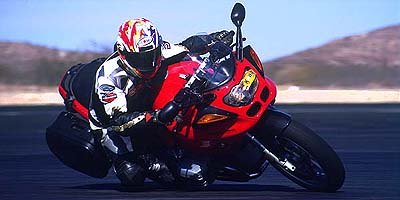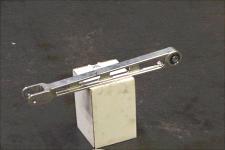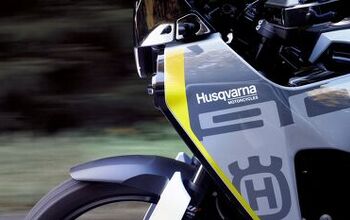Project BMW R1100S - Motorcycle.com
Torrance, California, November 13, 2000 -- As is usually the case with stock bikes these days, the BMW R1100S is pretty darn good. You have to really nitpick to find a wrinkle in the bratwurst. But since manufacturers have to design a bike that will complement a wide range of riders and applications, a few tweaks in the appropriate places can make a good bike into a great bike.
Such was the case with our long-term Beemer. We were more than satisfied with just the stock version, but after hearing about some aftermarket goodies, phones were picked up and our fingers started walking. As if a chocolate sundae isn't good enough, MO has the audacity to request a heapin'-helpin' o' nuts, not to mention a cherry on top, thankyouverymuch.
In the realm of sport touring, the R1100S is pretty sporty. But, it's also quite toury, too. In fact, we believe it's a near perfect combination of long distance capability and backroad prowess. Despite its numerous attributes, the S often is described as "different" by people who have never had the chance (read: pleasure) to spend any time on one. They mock what they don't understand.
The initial flogging of our test bike, however, brought some issues to the surface. This inspired us to enhance the "sport" side of the S while only marginally compromising the "tour."We enjoyed the relatively upright ergonomics of our original test bike since it was fitted with the tall clip-ons and large windscreen. We decided, however, that our project bike should be equipped with the lower clip-ons and smaller, sportier windscreen. Out the door went the black beauty, only to be replaced by something that became known as the "Slammin' Salmon" due to its orangey, pinkish hue.
For the record, we never harbored illusions of transforming this bike into a Ducati beater. This bike was to remain an all-rounder, after all, so all mods had to be well within the realm of real-world use.
For starters, there are many aftermarket exhaust systems available for this bike, but few - if any - have shown an actual improvement in performance. After a bit of research, we had consistently heard good things about Austrian manufacturer, Remus.
They make two complete systems and one slip-on. We opted for the complete "street" system ($1,118) since it was deemed that the "race" model was obnoxiously loud (the street model is rated at 92 db) and only gave a slight improvement in power over the "street" system. Also of note, the under-seat fitment of the mufflers places the pipes right at the ear-level of an automobile driver. Since we occasionally commuted on the S, we thought we'd do our part to upset as few people as possible.
The exhaust system worked well and opened things up a bit, though we did expect more of a power increase. Also, if you're going to make an entirely new exhaust system, why wouldn't you make it significantly lighter than the stock unit? The Remus system is remarkably heavy (23 pounds), keeping a large chunk of weight up high on the bike, right where it's least appreciated.
The system makes quite a bit more noise than stock but don't expect to win any "beautiful noise" contests against V-twins, or even Honda's V-four VFR for that matter. Parallel twins have a sound all their own, and this BMW was no different, sounding similar to an old Lotus Series Seven race car.
A quick stint on the MO dyno revealed the Remus pipe yielded a modest five horsepower increase, bringing the S into triple-digit figures. Torque, meanwhile is upped from 72 to 74 pounds per foot. This may not seem like much, except that the S exhibited a much flatter torque curve... always a welcome improvement.
Putting the leathers on and the paper theories aside, our project R1100S was a far superior track weapon (especially considering the few changes we made) compared to the stock bike.
With the stock link, the bike would protest at the notion of quick - and sometimes abrupt - line changes. But now, the entire chassis took on a more "aggressive" character. There'll be no confusing this bike for a Yamaha R6, but it's a huge improvement nonetheless.
While the modifications didn't transform the bike into a full-on track weapon, our Slammin' Salmon performed admirably. It was fun to have such a seemingly out-of-place bike work so well where it was never supposed to. And we didn't even lose that much in the way of normal day-to-day functionality.
All in all, we were able to achieve our goal of making the R1100S a sharper all-around machine. Thousand-mile days? Sure. Race tracks? For competition, there are better choices. But, for the occasional track day this bike would be one of our first picks. It's that good. And what's more: It's fun taken to another level.
More by Motorcycle Online Staff


































Comments
Join the conversation